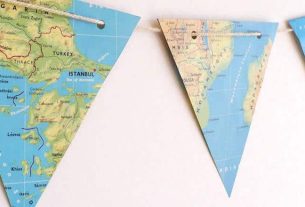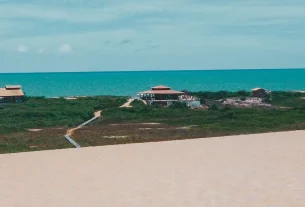Smaller than Paraná and a few kilometers from several cities in the south of Brazil, it is easy to get to know the Uruguay by car. And the best: the country, full of good roads and beautiful landscapes, combines with a road trip. In this text you will find a complete guide to organize your vacation.
Documents to travel in Uruguay
- Brazilians do not even need a passport to travel in Uruguay – just take the Identity Card, in good condition and with a photo in which you are recognizable. In many places you will read the tip of the 10 years of issuance of the document, but this rule is not true.
- Those who cross the border with the RG need to fill out a form, available at immigration posts, which will be stamped and must be presented at the exit of the country.
- If you already have a passport, however, you can take it that the document will be properly stamped, dispensing with the completion of this form.
- And remember that the National Driver’s License has no value to go through immigration. There are cases and cases of Brazilians who arrive at the border, realize that they are without the RG and need to return home.
- It is not necessary to have proof of yellow fever vaccine to enter Uruguay.
- Birth certificate is not an identity document. Not for children and newborns, who need to have an ID or passport.
Punta del Diablo
Green Card and Travel Insurance for Your Road Trip
The Green Charter is a mandatory insurance for Brazilian vehicles that cross the border with Uruguay, Paraguay and Argentina. The plan covers accidents with third parties during your stay abroad. Not having the Green Card can prevent the car from entering the country.
Insurance can be contracted for short periods, starting with three days, or larger, such as a month. The best way to hire is to contact your insurance company and ask for the service. You will pay the fee and they will send you the policy, which should be with you all the time. It is also worth budgeting the cost of an extension of your insurance coverage for accidents in Uruguay – it is that the Green Charter covers only damages that you cause to third parties and does not give you compensation in case of loss of your car.
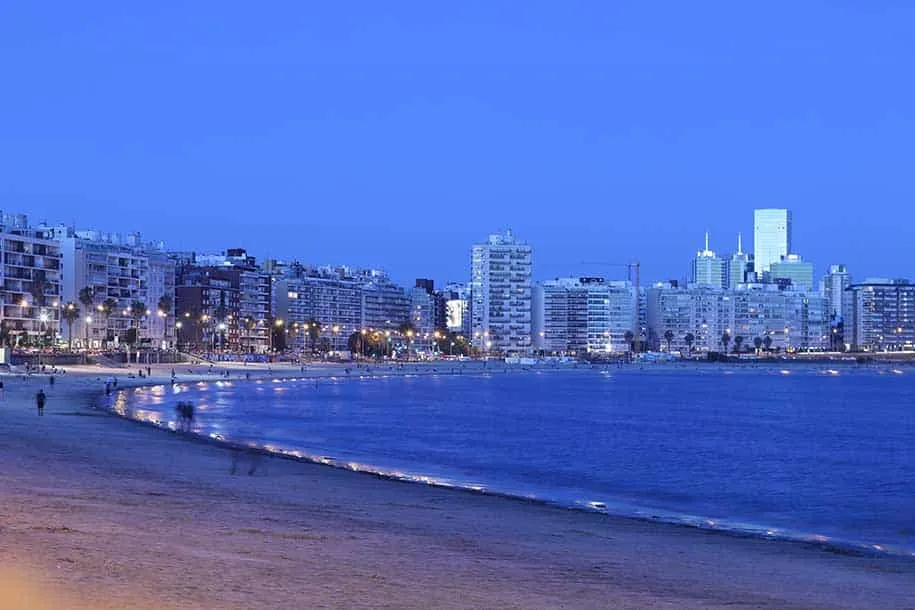
Montevideo
Another, more bureaucratic way to hire the green card is on the border itself, where several dispatchers offer the service. The price varies according to the duration of the road trip, but is between R$ 50, for shorter trips, and R$ 200, for those of a month.
Travel insurance is not mandatory, but it is prudent to hire one. Note that Green Card penthouses and traditional travel insurance are not equivalent. In addition to covering hospital costs and other problems, the advantage is the low amount invested: we pay just over R$ 40 per person for a five-day trip.
If the CNH does not serve as an identification document, it is enough to drive in Uruguay – you do not need to have the PID, International Driving Permit. And obviously don’t forget the car document. If the vehicle is in the name of someone who is going to travel, then everything is resolved. But if you are registered as a third party, you will need to make a power of attorney, signed and registered in a registry office that makes the so-called Apostille of The Hague – consult the notaries who do this service by clicking here. According to the website of the Embassy of Uruguay in Brazil, the power of attorney is also unnecessary “if the vehicle is driven by the spouse or relatives of the owner up to the second degree of inbreeding.”
It will also be necessary, at the time of immigration, to fill out a form for the vehicle. Keep the document safely, which may be requested by police and must be returned at the exit of the country.
See also: 5 Tips to Choose the Best Insurance Travel for South America
Should I rent a car?
The largest insurers do not allow you to rent a vehicle in Brazil and cross the border by driving. Some smaller companies even meet the service, but the daily value increases considerably, which may not offset the cost/benefit.
Renting a car to travel around Uruguay is worth it to – and a lot – if you arrive in Montevideo by plane and from the capital solve to know other cities.
Ahh, and before I forget: the government of Uruguay exempts foreign tourists from VAT, a tax, at 18%. This makes the rental cheaper, as long as the payment is made in Uruguay and with an international card. The discount is also valid for hotel reservations – the prices shown by sites such as Booking already leave the tax out – and even in the restaurant bills, when the amount is returned on the traveler’s invoice.
See also: How to rent a car with the best value for money
Immigration in Uruguay on land travel
Time to cross the border: Passport control is not the most effective thing in the world. Our trip began in Santa Maria, in the central region of Rio Grande do Sul, and followed for 254 km to Santana do Livramento, on the border with Uruguay. The Uruguayan city on the other side is Rivera. And by border understand a street and imaginary lines, since the two cities are conurbed and it is difficult to know when one begins and the other ends. The Brazilian and Uruguayan populations live together daily and there is predominance of portunhol.
So don’t be surprised to find out that the control of passports is done inside a Shopping Mall, the Si?eriz. You pass the food court, turn right and stamp the exit from Brazil. Then he takes three steps and gets in line to stamp the entrance to Uruguay. After this, he returns by the same path, crossing the lines of the two posts again. Of course, this is the situation in Rivera and it is not exactly so in other cities, but it gives the idea of the informality that may be crossing the border.
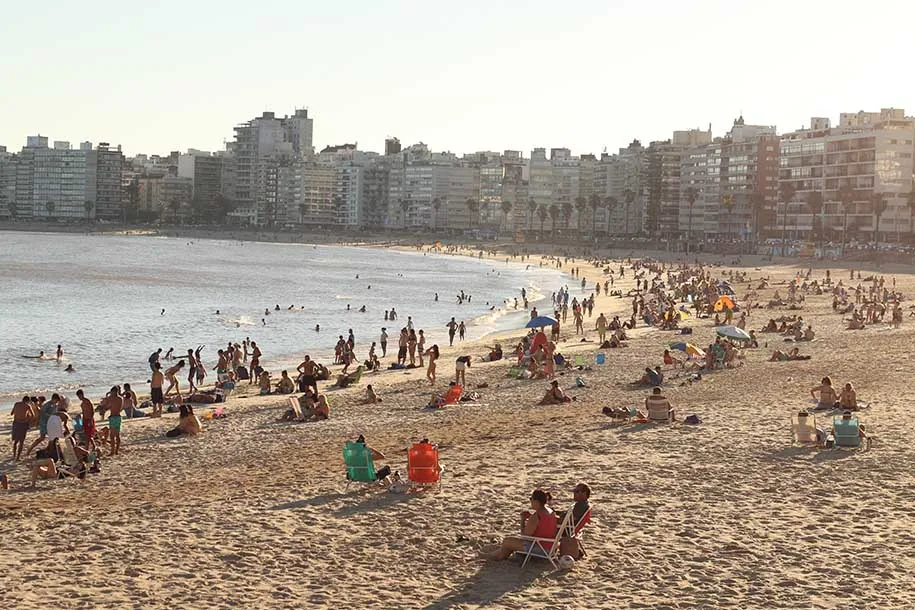
Montevideo
In other words, it is possible to leave from one country to another without doing migratory control, which is your responsibility. And not even in wanting to. Only, if you forget and do not go through immigration, you can have problems up front, either in case of being stopped by the police, or at the check-in of the hotel. Do not forget to register, on the return, his departure from Uruguay and his return to Brazil.
Shopping
When returning, many people to the Uruguayan cities of the border to shop in the malls. Remember the free limit for overseas purchases, which is $300 per person. There are also other limits: according to Revenue, 20 units of products with price below five dollars (with a maximum of 10 identical products) are allowed. When the good costs five dollars or above that, then the maximum limit is 10 units, three being identical. In addition, the quantitative limit of alcoholic beverages is 12 liters, cigarettes is 10 packs (with 20 units each), the cigar or cigarillo is 25 units and the smoke is 250 grams.
Trading money on the border between Brazil and Uruguay
I was afraid of conversion being bad at the border, but the price in Rivera was the same as the one we then found in Montevideo. There are some exchange offices – I traded in one inside the Si?eriz Shopping Mall, a few meters from passport control.
As much as reals are fully accepted in Montevideo and you can afford to pay a lot by card, you should exchange some amount of money. Avoid making this exchange in your city, since outside of Uruguay the price, which is a lower demand currency, will always be unfavorable for you.
Roads, tolls and gasoline in Uruguay
Many of the Uruguayan highways have tolls. In the Route 5, which we traveled for about 500 km and which goes from Rivera to Montevideo, there were three tolls, all of 100 Uruguayan pesos (about R$ 11). We paid in pesos, but I saw signs informing that it was possible to pay in dollars and in reais, although in worse quotes. There are reports that paying with other currencies is not possible at all tolls, so take some weights with you.
The state of the roads is generally very good. Respect local traffic rules and do not pass the speed limit. Do not drink and direct, since the rules regarding this are also strict, and remember to travel always with the headlights connected.
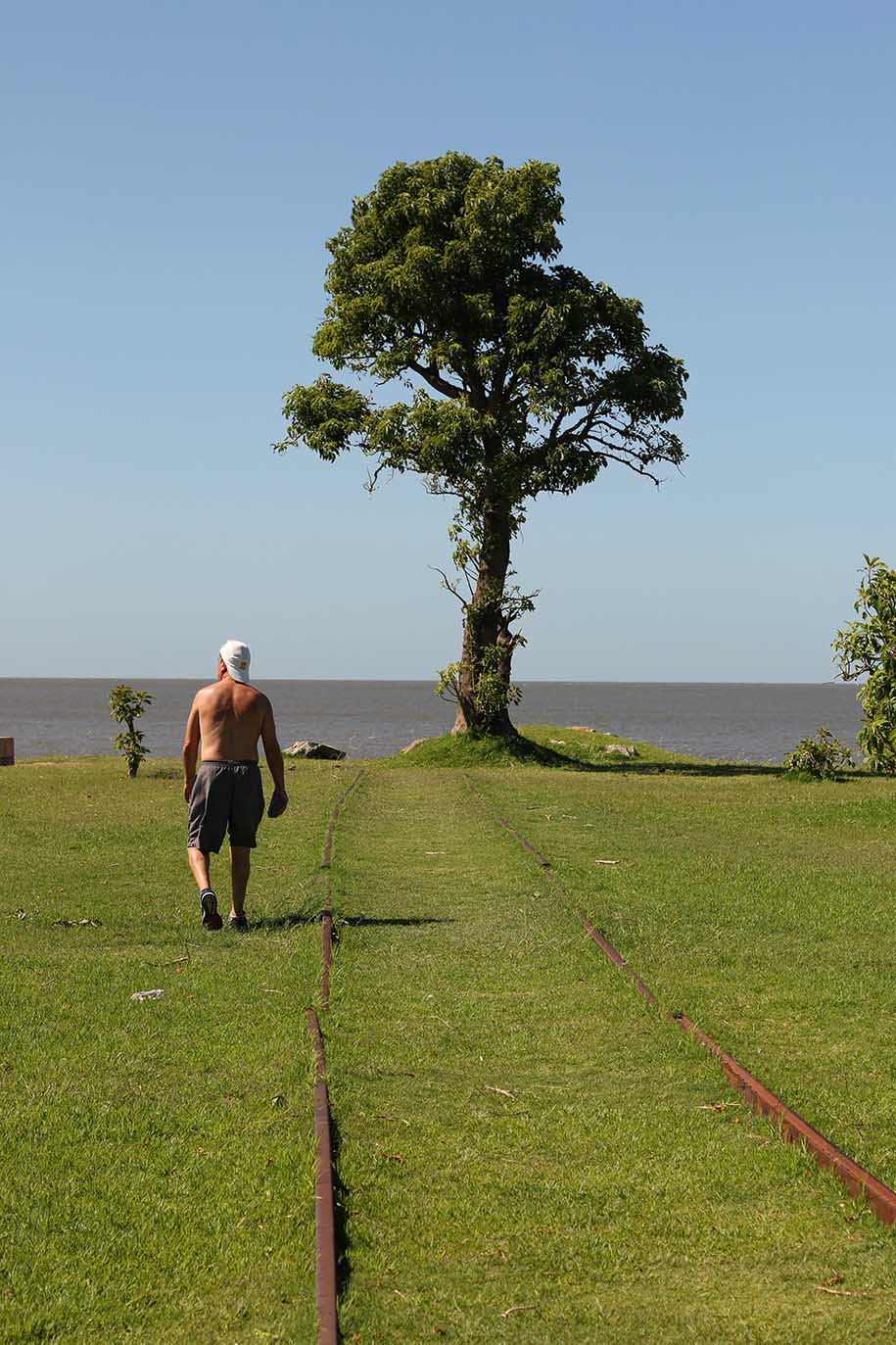
Man walks on the waterfront in Montevideo
If you cross the border through Chui, the most common route for those who leave Porto Alegre, pay attention to the presence of animals on the track on the Brazilian stretch of the highway, already near Uruguay – there is the Taim Ecological Reserve, where many capybaras live, among other animals.
Gasoline is considerably more expensive than in Brazil, so it is advisable to supply before crossing the border. Stay tuned for the tank and keep in mind that the next post may be far away.
See also: Where to stay in Montevideo – best neighborhoods
Travel itineraries in Argentina and Uruguay: 5, 7 and 12 days
Tips of itineraries in Uruguay by car
There are several points to make the crossing from Brazil to Uruguay. The most common, either because of the relative proximity to Porto Alegre, or because it is a gateway to the Uruguayan coast, is Chuí, the southernmost city in Brazil and which is conurbada with the Uruguayan Chuy – there the separation is also only a street. Other common options are Jaguarão (Brazil) / Rio Branco (Uruguay) and Santana do Livramento (Brasil) / Rivera (Uruguay). If Chuy is the best way out for those who go to the coast, Rivera is the best route for those who want to go directly to Montevideo.
Some interesting cities to include in the road trip by Uruguay, marked on the map above:
- Punta del Diablo – People of fishermen, half hipster, half hippie – finally, the typical backpacking destination. The population is less than a thousand inhabitants. It is 300 km from Montevideo and 44 km from the border with Brazil. There, two good accommodation options are the inn La Viuda del Diablo and the Mar de Fondo hostel.
- Cabo Polonio – A preserved area, full of sea lions. It is possible to get by car to the base of visitors and then you need to follow a gardener. Breutic and even more hippie – few places have electricity. For many, it is the high point of the Uruguayan coast. It is 97 km from the border and 252 km from Montevideo. A well-rated hostel there is Viejo Lobo and Olga Veigas y Otros is a simple and well located hostel.
- La Pedrera – Being less than 40 km from Cabo Polonio, this city is usually chosen as a base to explore the region. It is a well-known beach destination for gachos. An option for accommodation there is the Hotel La Pedrera. The hostel indication is with the Covadonga.
- La Paloma – 10 more kilometers and you will reach La Paloma, a city of less than 4,000 inhabitants, but which also fills in the summer. It is the typical town of the Uruguayan coast, with beach with rocks and a lighthouse. UY Proa Sur is one of the champion hotels in reserve, while Balconada Beach is a well-rated hostel alternative.
- Punta del Este – The trendiest beach in Uruguay and one of the most searched destinations for Brazilians – the city has even been pointed out by Forbes as the most luxurious resort on the continent. It is 130 km from Montevideo. There, the Enjoy Punta del Este is one of the most reserved hotels and the Florinda 3o Sup is highly praised for the location. A good accommodation choice is The Trip.
- Punta Ballena – Only 15 kilometers separate Punta del Este from Punta Ballena. Because of the short distance, there are those who prefer to make this town – more peaceful – from the base to know the region. In addition to the 12 kilometers of beaches, the great tourist attraction is Casapueblo, the work of the architect Carlos Páez Vilaró and which has become one of the main postcards of Uruguay. If you decide to stay there, Club Hotel Casapueblo and El Sol De Las Grutas are good options.
- Piriápolis – Another beach town. It is located between Montevideo and Punta del Este, less than 100 km from the capital and 40 km from Punta. In addition to the coast, there is a cable car and promenades – the ramblas. Here, take a look at Skyblue and the Hostería Miramar.
- Montevideo – The capital and the center of any trip to Uruguay. I recommend that you stay in Pocitos or Punta Carretas, which changes – and a lot – the experience of the tourist (in my first passage I stayed in the center and it was very different). We stayed at Hotel Gema and we liked it. Another good option, and facing the waterfront, is the Mercure, while the Destination26 is a good hostel in this area.
- Colonia del Sacramento – Historic city, of Portuguese origin, and full of charm. It has a beautiful sunset. It is about an hour by boat from Buenos Aires and 180 km from Montevideo. El Viajero is a good hostel option, while Le Vrero is a highly rated guesthouse.
You can always go to Argentina. For this, just take the ferry to Buenos Aires, either as a passenger or with the car, with companies like Buquebus.
If you are by car, do not forget to check if the hotel has parking. If not, ask (or see if another guest has left this information in the Booking reviews) if it is easy to stop the car on the street or if there is parking nearby.
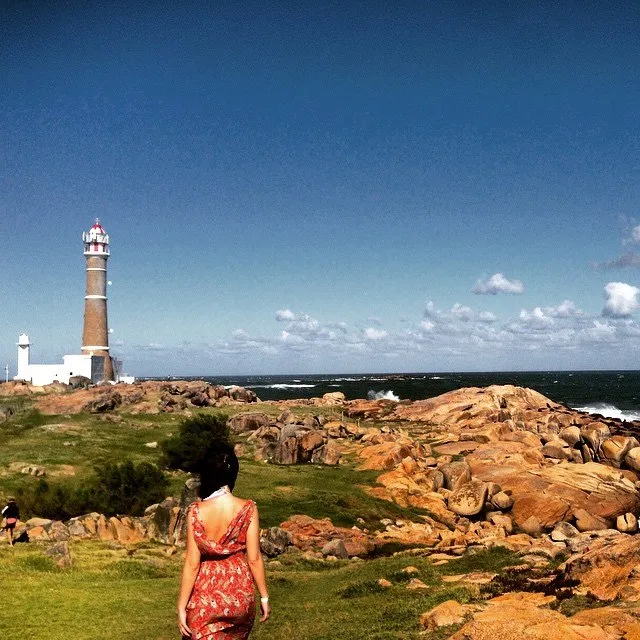
Cabo Polonio, Uruguay
How many days stay in Uruguay?
For a car ride unhurriedly through Uruguay and passing through several destinations, book at least one week. But whoever has more will not complain: Montevideo can be seen in two days, but there is a lot to do for an entire week.
You can visit cities like Colonia del Sacramento and Punta del Este in the bate-turn scheme, but those who can spend a night or two certainly enjoy more. And there are destinations, like Cabo Polonio, that fit like strategic road stops, but they also work better if you can stay for a few days and relax.
When to go?
It is possible to visit Uruguay all year round, but if you want to enjoy the coastline, go in the summer. Even trendy beaches, such as Punta del Este, usually have movement from December to February, but are more still in the rest of the year.

Sign up for our newsletter and stay up to date with exclusive news
that can transform your routine!
Warning: Undefined array key "title" in /home/storelat/public_html/wp-content/plugins/link-whisper-premium/templates/frontend/related-posts.php on line 12
Warning: Undefined array key "title_tag" in /home/storelat/public_html/wp-content/plugins/link-whisper-premium/templates/frontend/related-posts.php on line 13


